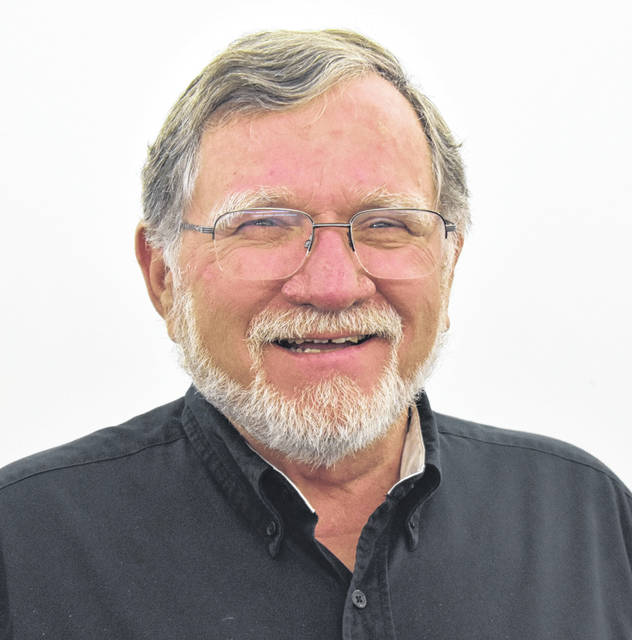
My first exposure to hospital nurses came in 1956. I had just turned 6 years old.
Second grade was fun. I loved my new teacher, Mrs. McCoy. Then, while speeding around the block, I wrecked my new bicycle. This was before 911 and life squads.
Our neighbor, Bob Whitney, jumped over two fences, scooped me up and carried me home. Then Bob drove my mom and me nearly 10 miles, to the emergency room in Middletown.
The ER nursing staff called in an orthopedic specialist. He realigned the bones in my broken right leg and put on a huge plaster cast. It went from my hip all the way down to my foot. The only part of me sticking out were my five little toes. My entire leg throbbed, but for some reason my five swollen toes screamed in pain.
A nurse brought in a small bag of ice wrapped in a thin, blue towel. She gently applied the ice to my toes. She was gentle. She was kind. The pain went from screaming to whimpering. I loved that nurse.
Fourteen years later, I started working at Miami Valley Hospital. Suddenly, I was surrounded by nurses.
In those days, nurses always wore white dresses, white hose, white shoes, and white caps. The only people who wore scrubs worked in surgery or the recovery room. All other employees also wore white. You could only tell us apart by our name tags. Of course, only the nurses wore white caps.
Ruby Roberson was a respiratory therapy instructor. She oversaw my initial training. On my first day on the job, Ruby took me all around the hospital. We visited every unit on every floor.
In 1970, dedicated intensive care units (ICU) were still a new concept. Just a few years earlier, the original ICU at MVH was established on 4-SW. It was a regular wing of the hospital. The main difference was the amount of sophisticated equipment and staffing crammed into that wing.
Just as we left the ICU, the overhead paging system announced, “Dr. CR – ICU, Dr. CR – ICU.”
Immediately, Ruby said, “Oh, you’re going to need to see this.” As we ran back, she explained that “Dr. CR” was a code meaning that the cardiac resuscitation team was needed on the unit. People in white were piling into the patient’s room. Ruby stuck me along a wall, out of the way.
I watched as a nurse climbed onto the edge of the patient’s bed and started chest compressions. Someone was holding a heavy, black mask over the patient’s face. The mask was attached to a football-sized bag. Every time the bag was squeezed, the patient’s chest would rise.
After a few minutes, the nurse who appeared to be in charge looked at me and said, “Come here. Hop up there and take her place.”
I said, “I’ve never done this before.” Ruby said, “I’ll show you how.” Surrounded by nurses, doctors, and many others, I knelt beside the patient. Ruby showed me where and how to place my hands. She showed me how deep and how often I needed to push. For the first time, I was doing chest compressions.
The staff worked like a machine. Everyone knew what was needed and they all did their jobs. Just before the patient was defibrillated, a nurse grabbed me by my belt and pulled me off the bed so I wouldn’t accidentally get shocked.
I knew this was what I wanted to do for the rest of my life.
The doctors seemed to know everything. The nurses knew how to do everything. I wanted to be part of their team. Within a year, I was managing ventilators in the ICU. I was hooked.
Slightly over 100 years earlier, during the Crimean War, a young lady named Florence Nightingale set a new standard of caring for wounded soldiers. During the night she could be observed carrying a lamp as she would, “Glide quietly along each corridor. Every poor fellow’s face would soften with gratitude at the sight of her. When all the medical officers retired for the night and silence and darkness had settled upon those injured soldiers, she could be observed alone, with a little lamp in her hand, making her rounds.”
Nightingale was born in May of 1820. In honor of her birth, President Reagan proclaimed Nursing Recognition Day in May of 1982. Later it became an entire month.
They deserve it. Over the next several decades, I worked on a few thousand resuscitations, with hundreds of amazing nurses. All of them intelligent, hardworking, dedicated people. Due to COVID-19, nurses are now being hailed as heroes.
Forty years ago, while kneeling on the side of a patient’s bed, I first saw nursing heroes at work.
When you see a nurse, thank them for the amazing work they do for all of us.
God bless nurses everywhere.
Randy Riley is former Mayor of Wilmington and former Clinton County Commissioner.


